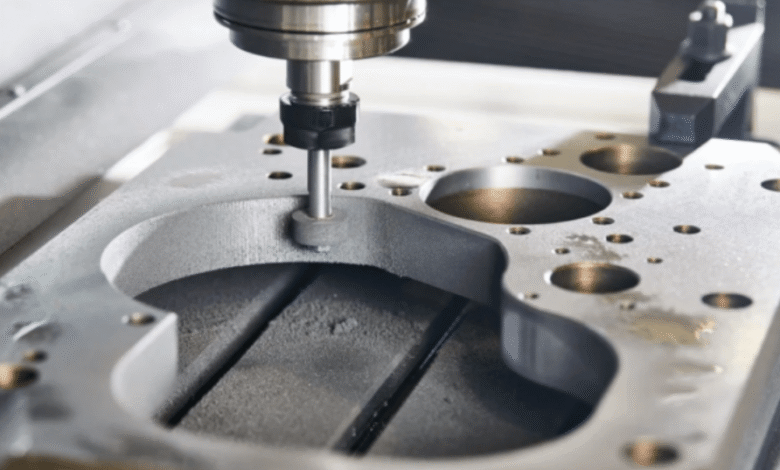How Surface Finishing Solutions Are Revolutionizing Modern Manufacturing

In today’s fast-evolving manufacturing world, quality isn’t determined solely by strength or functionality. The way a component looks and feels matters just as much—especially in competitive industries like automotive, aerospace, medical, and electronics. At the intersection of performance and aesthetics lies an often overlooked yet critical process: surface finishing solutions.
Surface finishing is no longer just a final polish—it’s an essential part of the production chain that enhances material properties, extends product life, and meets rigorous industry standards. From smoothing out rough edges to applying ultra-thin protective coatings, the right surface finishing solutions can transform the quality, performance, and value of nearly any product.
What Are Surface Finishing Solutions?
Surface finishing solutions refer to the wide variety of techniques used to alter the surface of a material to achieve desired characteristics. These include visual appeal, corrosion resistance, wear resistance, electrical conductivity, and more.
These solutions may involve mechanical, chemical, thermal, or electrochemical treatments. Depending on the industry, some processes focus on improving visual quality (like polishing or anodizing), while others concentrate on mechanical durability (like hard coating or heat treatment).
See also; AI Face Swap Technology for Creating Alternate Endings in Movies
Why Surface Finishing Matters More Than Ever
Today’s consumers and industries expect precision, longevity, and consistency. Whether it’s a surgical tool or a smartphone casing, the surface finish affects not only the look and feel but also the overall user experience. Some of the key reasons surface finishing solutions are essential include:
1. Durability and Protection
Products are expected to last longer in challenging environments. Surface treatments like galvanizing or powder coating protect against corrosion, abrasion, and chemical wear.
2. Performance Optimization
In many applications, especially in the medical and aerospace sectors, surface properties such as friction, heat conductivity, or micro-smoothness directly affect functionality.
3. Compliance with Industry Standards
Many industries require specific surface finishes to meet regulatory guidelines for safety, hygiene, or compatibility.
4. Aesthetics and Branding
High-quality finishes contribute to visual consistency, brand identity, and consumer appeal. Brushed metal or mirror-polished components can become brand-defining elements.
Common Types of Surface Finishing Solutions
The world of surface finishing solutions is vast. Here are some of the most widely used techniques:
Mechanical Finishing
- Grinding and Polishing: For achieving high-gloss finishes or smooth surfaces.
- Buffing: Adds luster and removes fine imperfections.
- Shot Blasting/Bead Blasting: Used to clean, strengthen, or texture surfaces.
Chemical and Electrochemical Finishing
- Anodizing: Particularly effective for aluminum, providing a corrosion-resistant oxide layer.
- Electroplating: Deposits a layer of metal like nickel or chrome for appearance and protection.
- Passivation: Removes free iron and enhances corrosion resistance, often used for stainless steel.
Thermal and Coating Solutions
- Powder Coating: A dry finishing process that’s durable and environmentally friendly.
- Plasma Spraying: Applies protective or functional coatings at high temperatures.
- Ceramic Coating: Used in high-heat or chemically harsh environments.
Laser and Advanced Treatments
- Laser Texturing: Creates intricate surface patterns with precision.
- Nanocoatings: Provide water-repellent, fingerprint-resistant, or antimicrobial properties.
Industry Applications of Surface Finishing Solutions
Aerospace
Surface quality directly impacts fuel efficiency, structural integrity, and safety. Coatings are applied to prevent oxidation, reduce drag, or enhance fatigue resistance.
Automotive
From undercarriage protection to decorative finishes, surface finishing solutions ensure performance and visual excellence across interior and exterior parts.
Electronics
As devices get smaller, the need for micro-precision finishing grows. Finishes must support conductivity, protect circuits, and maintain heat dissipation.
Medical and Healthcare
Sterility and corrosion resistance are non-negotiable. Instruments and implants require electropolishing or passivation to meet hygienic and biological standards.
Industrial Machinery
Heavy-duty equipment components often undergo nitriding, plating, or spray coating to improve wear resistance and extend service life.
How to Choose the Right Surface Finishing Solution
Selecting the ideal surface treatment isn’t a one-size-fits-all decision. Several variables determine the best approach:
1. Material Composition
Different base materials (aluminum, stainless steel, titanium, etc.) react differently to various treatments.
2. Intended Use
Will the product be exposed to chemicals, moisture, or high heat? Should the surface be frictionless or grippy?
3. Visual Requirements
Should the finish be glossy, matte, textured, or colored to match branding or design guidelines?
4. Cost and Production Volume
Some processes, like manual polishing, are ideal for low-volume, high-end parts, while others like powder coating suit large-scale production.
Sustainability in Surface Finishing Solutions
Modern surface finishing solutions are also becoming greener. Regulations and consumer expectations are pushing companies toward sustainable practices. Eco-friendly solvents, water-based coatings, and recyclable abrasives are replacing traditional toxic chemicals. Low-VOC (Volatile Organic Compounds) finishes and energy-efficient machinery are also gaining ground.
Companies that offer sustainable surface finishing services often attract more global business, as environmental compliance is now part of most global supply chains.
Surface Finishing in the Era of Smart Manufacturing
With the rise of Industry 4.0, even surface finishing solutions are becoming intelligent. Smart sensors and AI integration allow real-time monitoring of coating thickness, surface roughness, and process efficiency.
Robotic finishing systems now handle repetitive or complex tasks with precision. These advancements reduce errors, save labor costs, and improve consistency—especially important for high-tolerance parts in aerospace or medical applications.
Additive manufacturing (3D printing) has also introduced new challenges and opportunities in surface finishing. Post-processing 3D printed parts often requires entirely new techniques to achieve desired smoothness and strength.
Partnering with the Right Finishing Provider
Choosing a provider with proven expertise in surface finishing solutions can drastically impact your product’s quality and market performance. When evaluating potential partners, consider:
- Experience with similar materials and industries
- Certifications (e.g., ISO, RoHS, FDA)
- In-house vs. outsourced finishing capabilities
- Customization and prototyping services
- Lead times and scalability
Ask for sample finishes, check client testimonials, and inspect their quality assurance processes to ensure reliability.
Final Thoughts
In a world where detail defines excellence, surface finishing solutions are not just a final touch—they’re a value-adding stage in manufacturing. The right finish can be the difference between a component that fails and one that excels, between a product that looks cheap and one that screams quality.
Whether you’re developing aerospace parts, consumer electronics, or surgical instruments, investing in the right finishing solution can enhance product value, customer trust, and long-term success. With advancing technologies and a growing focus on sustainability, the field of surface finishing continues to evolve—and with it, the potential for innovation in every finished part.





